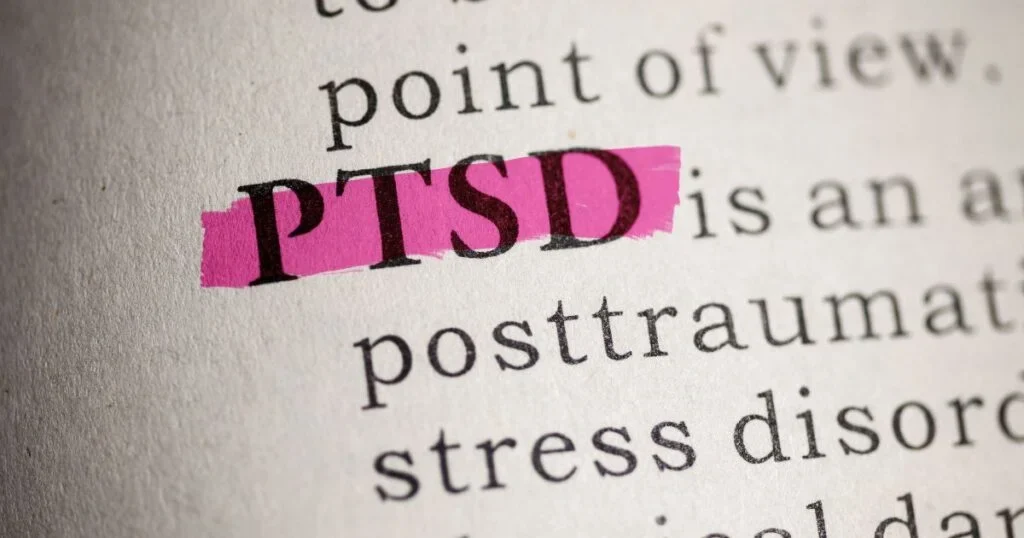
Understanding PTSD & Therapeutic Approaches:
Understanding PTSD & Therapeutic Approaches:
How DBT, IFS, EMDR, and SFBT Help Trauma
How DBT, IFS, EMDR, and SFBT Help Trauma
Introduction
Post-Traumatic Stress Disorder (PTSD) is a mental health condition triggered by witnessing or experiencing a traumatic event. It affects millions globally and manifests through symptoms such as flashbacks, severe anxiety, and uncontrollable thoughts about the event (American Psychiatric Association, 2013). Various therapeutic interventions have been developed to help individuals manage and overcome PTSD. This article explores how Dialectical Behavior Therapy (DBT), Internal Family Systems (IFS), Eye-Movement Desensitization and Reprocessing (EMDR), and Solution-Focused Brief Therapy (SFBT) can assist in the treatment of trauma.
Dialectical Behavior Therapy (DBT)
Dialectical Behavior Therapy (DBT) was initially developed to treat borderline personality disorder but has shown effectiveness in treating PTSD (Linehan, 1993). DBT combines cognitive-behavioral techniques with mindfulness practices to help patients develop skills in distress tolerance, emotion regulation, and interpersonal effectiveness. Research by Harned et al. (2012) demonstrated that DBT significantly reduces PTSD symptoms by fostering acceptance and change through structured modules.
A critical aspect of DBT is its focus on the validation of patients’ experiences and emotions. This validation helps individuals feel understood and supported, which is crucial for those dealing with trauma (Linehan, 1993). Moreover, DBT’s emphasis on mindfulness helps patients stay present, reducing the frequency and intensity of traumatic flashbacks (Harned et al., 2012). Studies have shown that patients who undergo DBT experience significant improvements in emotional regulation and a reduction in self-destructive behaviors, which are often comorbid with PTSD (Koons et al., 2001).
Furthermore, DBT’s structured approach includes group therapy sessions that provide a supportive environment for sharing experiences and strategies. This group dynamic can be particularly beneficial for individuals with PTSD, as it fosters a sense of community and shared understanding (Wagner, Rizvi, & Harned, 2007). Overall, the multifaceted approach of DBT offers a comprehensive treatment model for managing PTSD symptoms effectively.
Internal Family Systems (IFS)
Internal Family Systems (IFS) therapy, developed by Richard Schwartz, posits that the mind consists of multiple sub-personalities or “parts” that can become fragmented due to trauma (Schwartz, 1995). IFS aims to heal these fragmented parts by fostering self-leadership and compassionate self-inquiry. Research by Rossi (2017) found that IFS can effectively reduce PTSD symptoms by helping individuals integrate and reconcile their internal parts.
One of the core principles of IFS is the concept of the “Self,” which is considered the true essence of a person, characterized by qualities such as compassion, curiosity, and calmness (Schwartz, 1995). IFS therapy helps individuals access their Self to heal their wounded parts, leading to a greater sense of inner harmony and resilience. This approach has been shown to reduce the internal conflicts and emotional turmoil that often accompany PTSD (Rossi, 2017).
Moreover, IFS emphasizes the importance of understanding and healing from within rather than solely focusing on external circumstances. This inward-focused approach can be particularly beneficial for trauma survivors who may feel overwhelmed by their external environment (Schwartz, 1995). By fostering a compassionate relationship with their internal parts, individuals can better manage their PTSD symptoms and achieve lasting emotional healing (Sweezy & Ziskind, 2013).
Eye-Movement Desensitization and Reprocessing (EMDR)
Solution-Focused Brief Therapy (SFBT)
Solution-Focused Brief Therapy (SFBT) is a goal-oriented therapeutic approach that focuses on identifying and building on clients’ strengths and resources to create positive change (de Shazer et al., 1986). While not traditionally associated with PTSD treatment, SFBT has shown promise in helping individuals with trauma by promoting resilience and empowering them to envision and work towards a preferred future (Gingerich & Peterson, 2013).
SFBT’s focus on solutions rather than problems can be particularly beneficial for trauma survivors who may feel stuck in their past experiences (de Shazer et al., 1986). By encouraging clients to identify and build on their strengths, SFBT helps them develop a sense of agency and hope for the future. This approach has been shown to reduce PTSD symptoms by shifting clients’ focus from their traumatic past to their desired future (Gingerich & Peterson, 2013).
Furthermore, SFBT’s emphasis on brief and focused interventions aligns with the needs of many trauma survivors who may find traditional, long-term therapy overwhelming (de Shazer et al., 1986). Studies have shown that SFBT can produce significant improvements in PTSD symptoms within a relatively short time frame, making it a practical and effective therapeutic option (Bond et al., 2013). Overall, SFBT’s strengths-based and future-oriented approach offers a unique and valuable perspective for trauma treatment.
Conclusion
In conclusion, various therapeutic approaches offer promising strategies for managing and treating PTSD. Dialectical Behavior Therapy (DBT) provides a structured, skills-based approach that helps individuals regulate their emotions and build resilience. Internal Family Systems (IFS) therapy offers a compassionate, self-led approach to healing fragmented parts and fostering inner harmony. Eye-Movement Desensitization and Reprocessing (EMDR) utilizes bilateral stimulation to reprocess traumatic memories and reduce their emotional impact. Solution-Focused Brief Therapy (SFBT) empowers clients to build on their strengths and envision a positive future. Each of these therapies provides unique benefits and can be tailored to meet the specific needs of individuals with PTSD.
Resources
American Psychiatric Association. (2013). Diagnostic and statistical manual of mental disorders (5th ed.).
Bond, C., Woods, K., Humphrey, N., Symes, W., & Green, L. (2013). The effectiveness of solution focused brief therapy with children and families: A systematic and critical review. Journal of Child Psychology and Psychiatry, 54(7), 707-723.
Chen, J., Zhang, Y., & Deng, M. (2014). Meta-analysis of eye movement desensitization and reprocessing for treating posttraumatic stress disorder. Neuropsychiatric Disease and Treatment, 10, 2143-2156.
de Shazer, S., Berg, I. K., Lipchik, E., Nunnally, E., Molnar, A., Gingerich, W., & Weiner-Davis, M. (1986). Brief therapy: Focused solution development. Family Process, 25(2), 207-221.
Gingerich, W. J., & Peterson, L. T. (2013). Effectiveness of solution-focused brief therapy: A systematic qualitative review of controlled outcome studies. Research on Social Work Practice, 23(3), 266-283.
Harned, M. S., Korslund, K. E., Foa, E. B., & Linehan, M. M. (2012). Treating PTSD in suicidal and self-injuring women with borderline personality disorder: Development and preliminary evaluation of a dialectical behavior therapy prolonged exposure protocol. Behavior Therapy, 43(3), 506-517.
Koons, C. R., Robins, C. J., Tweed, J. L., Lynch, T. R., Gonzalez, A. M., Morse, J. Q., & Bastian, L. A. (2001). Efficacy of dialectical behavior therapy in women veterans with borderline personality disorder. Behavior Therapy, 32(2), 371-390.
Linehan, M. M. (1993). Cognitive-behavioral treatment of borderline personality disorder. New York: Guilford Press.
Rossi, J. J. (2017). Internal Family Systems therapy for complex trauma: A case study. Journal of Psychotherapy Integration, 27(1), 8-21.
Schwartz, R. C. (1995). Internal Family Systems Therapy. New York: Guilford Press.
Shapiro, F. (1989). Efficacy of the eye movement desensitization procedure in the treatment of traumatic memories. Journal of Traumatic Stress, 2(2), 199-223.
Shapiro, F. (2001). Eye movement desensitization and reprocessing (EMDR) therapy: Basic principles, protocols, and procedures (2nd ed.). New York: Guilford Press.
Shapiro, F. (2014). EMDR therapy: An overview of current and future research. European Review of Applied Psychology, 64(4), 213-222.
Sweezy, M., & Ziskind, E. L. (2013). Internal family systems therapy: New dimensions. New York: Routledge.
Wagner, A. W., Rizvi, S. L., & Harned, M. S. (2007). Applications of dialectical behavior therapy to the treatment of complex trauma-related problems: When one case formulation does not fit all. Journal of Traumatic Stress, 20(4), 391-400.

